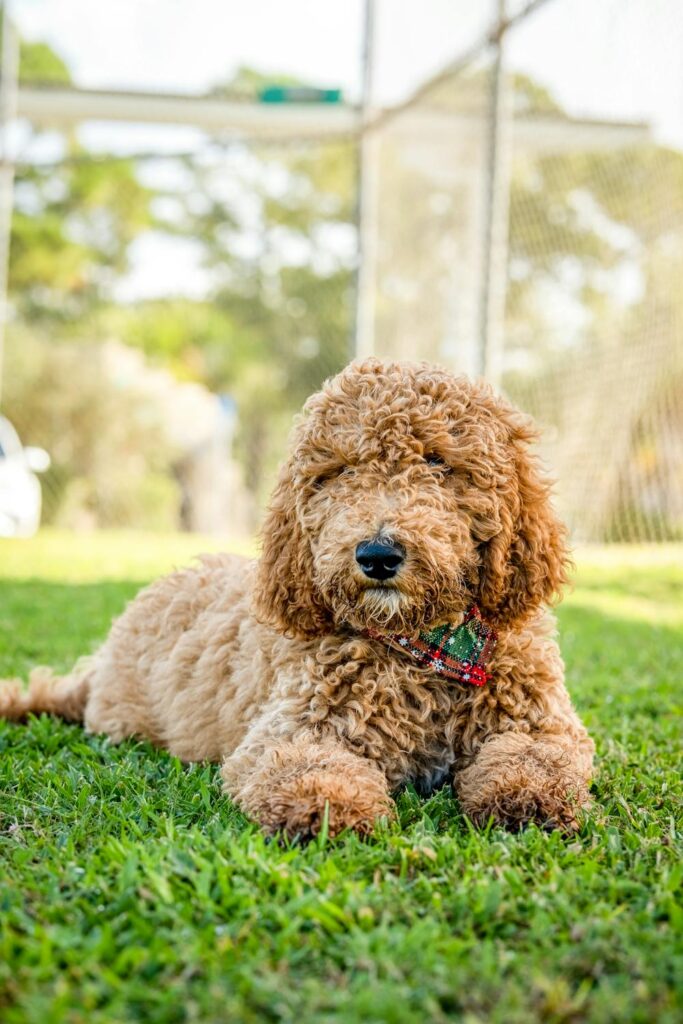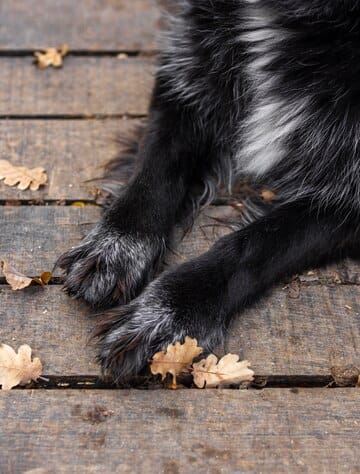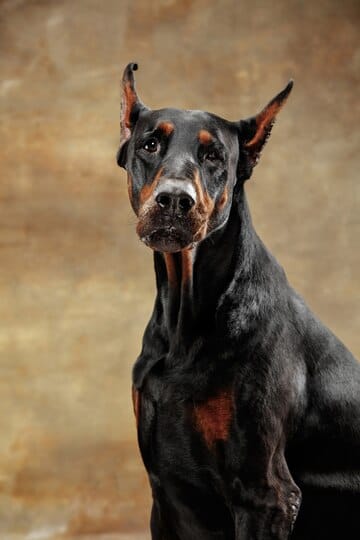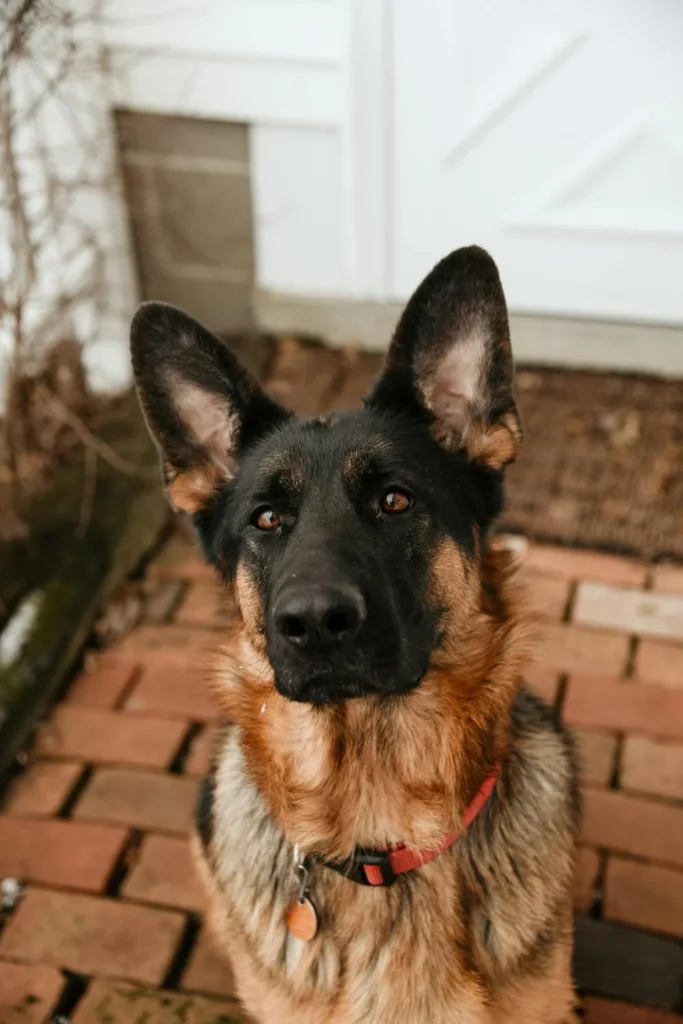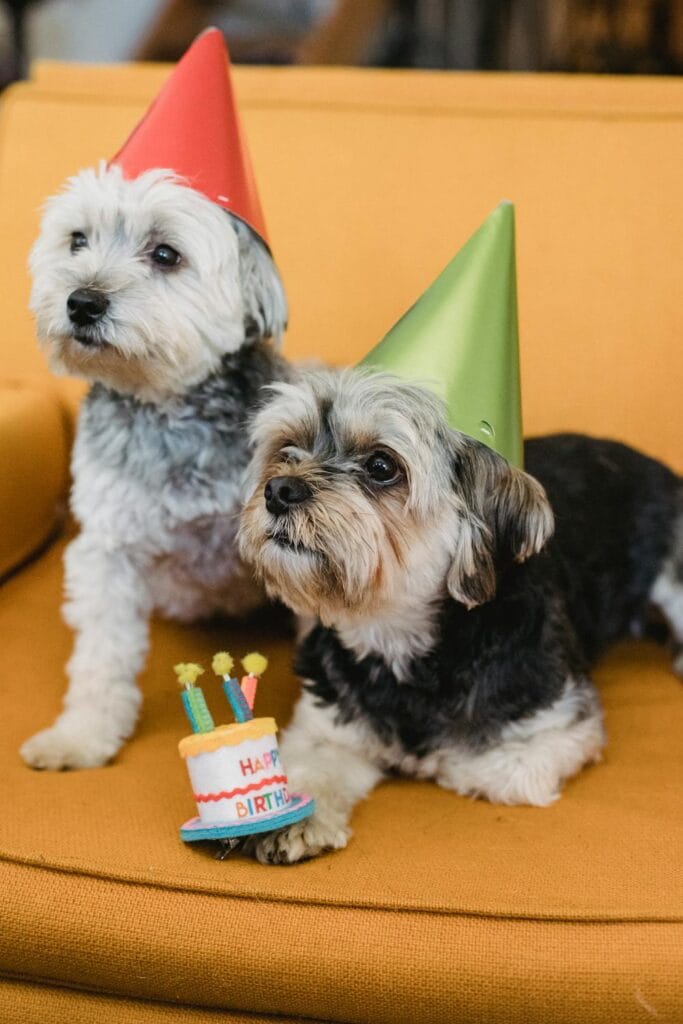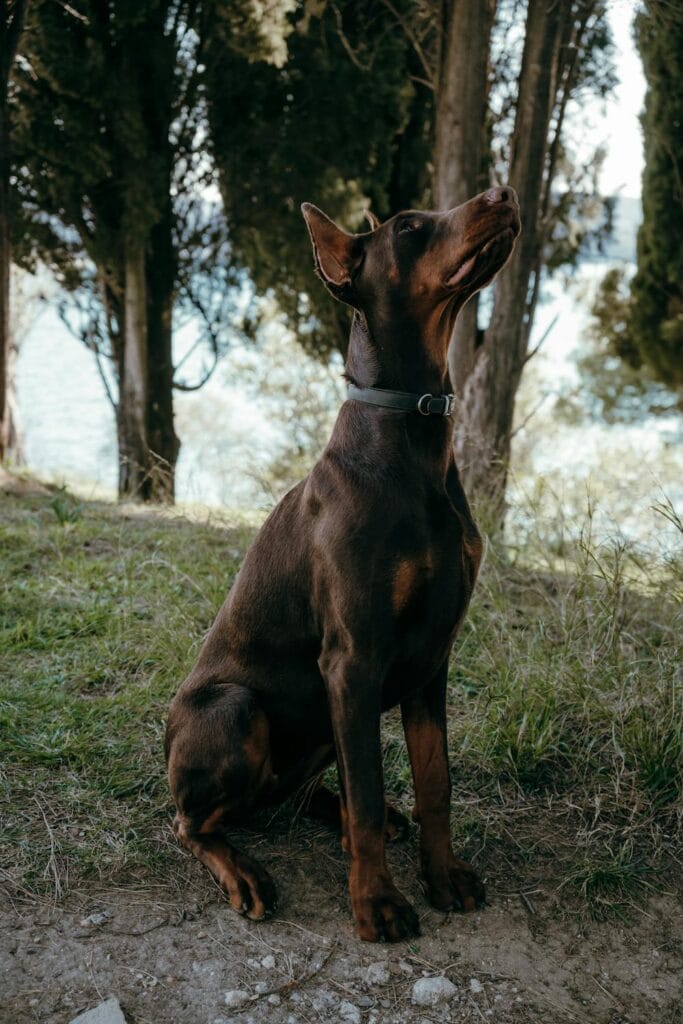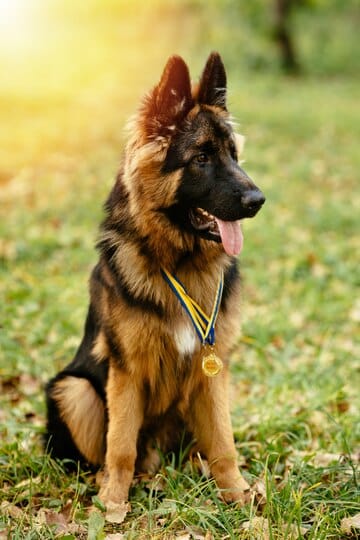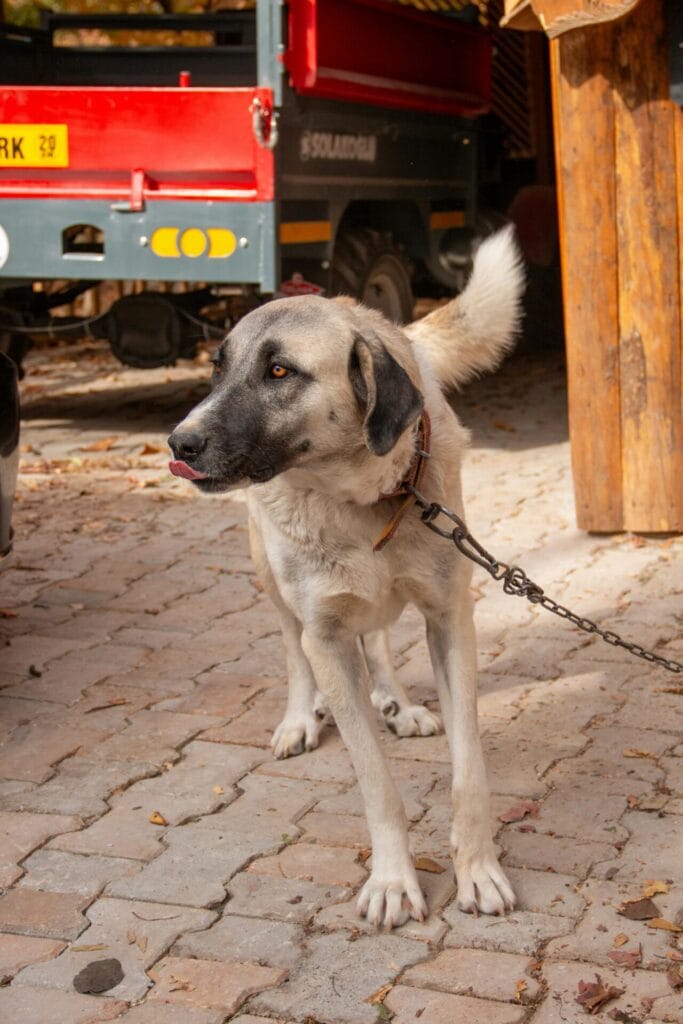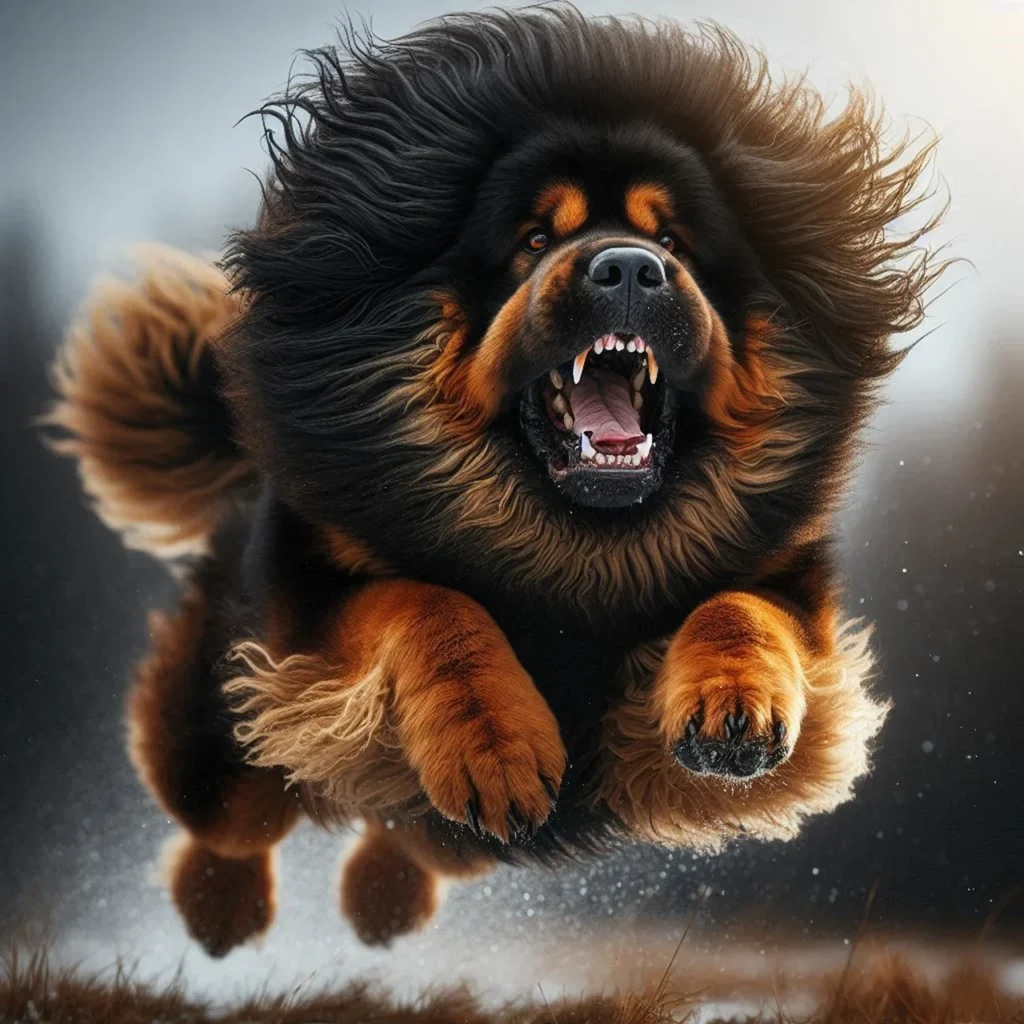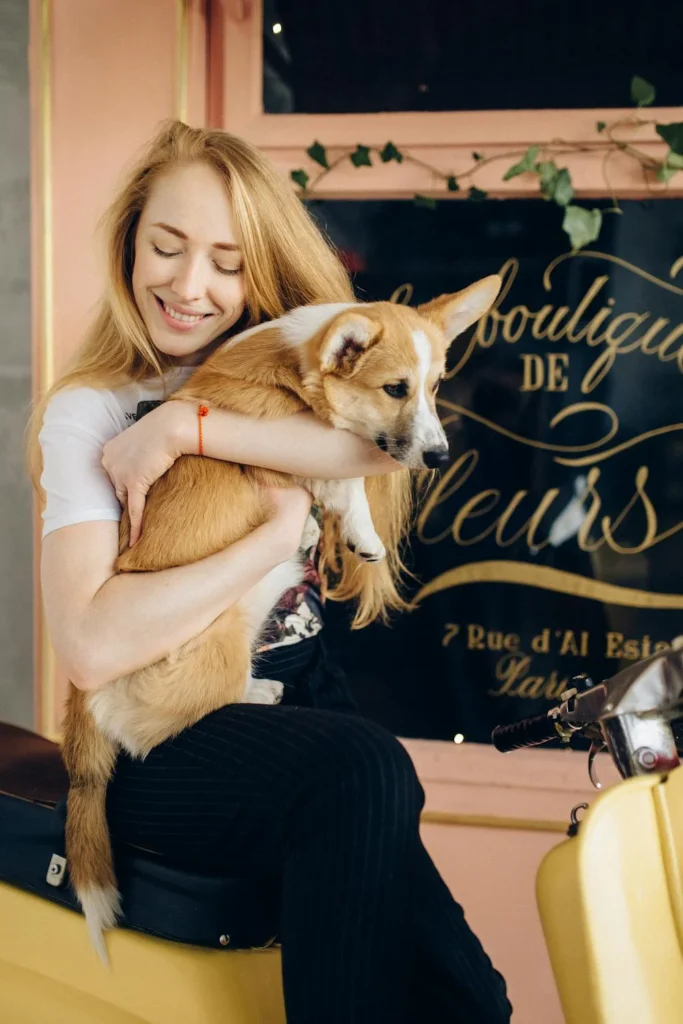- Introduction: Decoding the Poodle’s Picky Eating Habits 🕵️♀️
- Poodle Varieties: Size Matters When It Comes to Nutrition 📏🍖
- The Poodle Life Cycle: Nutritional Needs from Puppy to Senior 🐾👶➡️👵
- When Your Poodle Won’t Eat: Understanding and Addressing the Issue 🚫🍖
- The Picky Poodle’s Plate: Crafting the Perfect Menu 🍽️👨🍳
- Mealtime Magic: Creating the Perfect Dining Experience 🎩✨
- Troubleshooting Picky Poodle Problems: Solutions for Common Scenarios 🔧🐩
- The Nutritional Deep Dive: Understanding What Your Poodle Really Needs 🔬🍖
- Homemade Delights: Recipes to Tempt Your Picky Poodle 👨🍳🍲
- The Psychology of Poodle Eating: Understanding Your Dog’s Mind 🧠🍖
- When Picky Eating Becomes a Health Concern: Red Flags to Watch For 🚩
- Supplements and Additives: Boosting Your Poodle’s Diet 💊
- FAQs: Your Poodle Eating Questions Answered 🙋♀️🙋♂️
- Conclusion: Nurturing Your Poodle’s Inner Gourmet 🏆🐩
Introduction: Decoding the Poodle’s Picky Eating Habits 🕵️♀️
Ah, poodles! Those elegant, intelligent, and sometimes perplexingly picky eaters. If you’ve ever found yourself staring at your poodle, wondering why they’re turning their nose up at a perfectly good bowl of kibble, you’re not alone. Welcome to “The Poodle Palate,” where we’ll unravel the mystery of fussy poodle eating habits and equip you with all the knowledge you need to keep your furry friend happy, healthy, and well-fed.
Why Are Poodles So Fussy? It’s Not Just You! 🤷♂️
First things first – let’s address the elephant in the room. Are poodles really that picky, or is it just a myth? Well, truth be told, poodles do have a reputation for being selective eaters, and it’s not without reason. But before you start feeling like you’ve somehow failed in the culinary department, let’s break down why your poodle might be acting like a four-legged food critic.

The Poodle Personality: Brains and Taste Buds 🧠👅
Poodles aren’t just a pretty face with a fancy haircut. These dogs are consistently ranked among the most intelligent breeds. And with that big brain comes… opinions. Lots of them. Including opinions about food.
- Sensory Sensitivity: Poodles can be quite sensitive to different textures and flavors. What might seem delicious to us (or other dogs) could be downright offensive to a poodle’s refined palate.
- Boredom Busters: Just like humans, poodles can get bored with eating the same thing day in and day out. They might be craving variety in their diet.
- Environmental Factors: Poodles can be sensitive to their surroundings. A change in routine, new people in the house, or even the weather can affect their appetite.
The Evolution of Picky Eating 🦴➡️🍽️
Interestingly, poodles’ picky eating habits might have historical roots. Originally bred as water retrievers, poodles were working dogs who earned their keep. In many households today, however, poodles are beloved pets who don’t have to work for their food. This shift from “earning” meals to having them freely given might contribute to their selective eating habits.
Poodle Varieties: Size Matters When It Comes to Nutrition 📏🍖
Before we dive deeper into the world of poodle nutrition, it’s crucial to understand that not all poodles have the same needs. The poodle breed comes in three distinct sizes, each with its own nutritional requirements. Let’s break it down:
Toy Poodles: Small but Mighty 🧸
- Size: 4-6 pounds
- Height: Up to 10 inches at the shoulder
- Daily Caloric Needs: 200-300 calories
- Meal Frequency: 3-4 times per day
Toy poodles may be tiny, but they’re bundles of energy. They have fast metabolisms and need frequent, small meals to keep their energy levels stable.
Miniature Poodles: The Middle Child 🐕
- Size: 10-15 pounds
- Height: 10-15 inches at the shoulder
- Daily Caloric Needs: 300-400 calories
- Meal Frequency: 2-3 times per day
Miniature poodles strike a balance between the toy and standard varieties. They’re active and playful but don’t require as much food as their larger cousins.
Standard Poodles: The Big Dogs 🐩
- Size: 40-70 pounds
- Height: Over 15 inches at the shoulder
- Daily Caloric Needs: 1000-1300 calories
- Meal Frequency: 2 times per day
Standard poodles have higher caloric needs due to their size, but they’re also prone to bloat, so it’s important to space out their meals and avoid feeding immediately before or after exercise.
Comparative Nutritional Needs Table 📊
| Poodle Size | Protein Needs | Fat Needs | Carbohydrate Needs | Special Considerations |
|---|---|---|---|---|
| Toy | High | Moderate | Low | Prone to hypoglycemia |
| Miniature | Moderate-High | Moderate | Moderate | Balanced diet crucial |
| Standard | Moderate | Moderate | Moderate | Watch for bloat risk |
The Poodle Life Cycle: Nutritional Needs from Puppy to Senior 🐾👶➡️👵
Just like humans, poodles’ nutritional needs change as they age. Let’s take a journey through the life stages of a poodle and see how their dietary requirements evolve.
Puppyhood: Fuel for Growth 🍼
- Age: 0-1 year
- Nutritional Focus: High protein and fat for rapid growth
- Key Points:
- Requires 22-32% protein in their diet
- Needs 4-5 small meals per day
- Calcium and phosphorus crucial for bone development
Puppy Feeding Schedule 🕰️
| Age (months) | Number of Meals | Type of Food |
|---|---|---|
| 2-3 | 4-5 | Puppy food (wet or softened kibble) |
| 3-6 | 3-4 | Puppy food |
| 6-12 | 2-3 | Gradually transition to adult food |
Adolescence: The Awkward Phase �teenager
- Age: 1-2 years
- Nutritional Focus: Balanced diet to support final growth spurts
- Key Points:
- Gradually transition to adult food
- Monitor weight closely to prevent obesity
- Adjust portions based on activity level
Adulthood: Prime Time 💪
- Age: 2-7 years
- Nutritional Focus: Maintenance and health support
- Key Points:
- Balanced diet with moderate protein and fat
- Adjust calories based on activity level
- Consider supplements for coat health and joint support
Senior Years: Golden Oldies 👴
- Age: 7+ years
- Nutritional Focus: Weight management and organ support
- Key Points:
- Lower calorie diet to prevent obesity
- Higher fiber content for digestive health
- Supplements for joint health and cognitive function
When Your Poodle Won’t Eat: Understanding and Addressing the Issue 🚫🍖
It’s a scenario that strikes fear into the heart of any poodle parent: your furry friend has suddenly lost interest in food. Before you panic, let’s explore some common reasons why poodles might refuse to eat and what you can do about it.
Common Reasons for Poodle Food Refusal 🤔
- Dental Issues: Toothaches or gum problems can make eating painful.
- Illness or Pain: Loss of appetite is often the first sign of underlying health issues.
- Stress or Anxiety: Changes in environment or routine can upset your poodle’s stomach.
- Boredom with Current Food: Even poodles can get tired of eating the same thing every day.
- Change in Routine: Moving houses, new family members, or schedule changes can affect appetite.
- Pickiness: Some poodles are just naturally selective eaters.
- Recent Vaccinations: Temporary loss of appetite can occur after shots.
- Aging: Older poodles may have decreased appetites.
Signs to Watch For 👀
- Lethargy or decreased activity
- Vomiting or diarrhea
- Visible discomfort or pain
- Changes in water consumption
- Weight loss
What to Do When Your Poodle Won’t Eat 🛠️
- Check for Obvious Issues: Look for signs of illness or injury.
- Create a Calm Environment: Ensure the feeding area is quiet and stress-free.
- Try Different Foods: Offer a variety of textures and flavors.
- Hand-Feeding: Sometimes a little extra attention can encourage eating.
- Warm the Food: Heating food slightly can make it more aromatic and appealing.
- Stick to a Schedule: Regular mealtimes can help stimulate appetite.
- Exercise Before Meals: A short walk can increase hunger.
- Consult Your Vet: If the problem persists for more than 24-48 hours, seek professional advice.
When It’s an Emergency: Poodle Not Eating or Drinking 🚨
If your poodle is refusing both food and water, it’s time to take immediate action. Dehydration can set in quickly, especially in smaller poodles.
Signs of Dehydration in Poodles:
- Dry, sticky gums
- Sunken eyes
- Loss of skin elasticity (when pinched, skin doesn’t snap back quickly)
- Lethargy or depression
Immediate Steps to Take:
- Offer water from different sources (bowls, fountains, even ice cubes to lick)
- Try flavoring water with low-sodium chicken broth
- Use a syringe to carefully administer small amounts of water
- Seek emergency veterinary care if symptoms persist for more than a few hours
Remember, when it comes to not eating or drinking, it’s always better to err on the side of caution and consult a professional.
The Picky Poodle’s Plate: Crafting the Perfect Menu 🍽️👨🍳
Now that we understand why poodles might be picky and what to do in case of food refusal, let’s dive into the exciting world of poodle cuisine. What should you feed a fussy poodle? Let’s explore your options!
Commercial Dog Foods: Navigating the Options 🛒
With rows upon rows of dog food options at the pet store, choosing the right one can feel overwhelming. Here’s what to look for:
Dry Kibble: The Convenient Classic 🥫
Pros:
- Convenient and easy to store
- Helps maintain dental health
- Usually more economical
Cons:
- Some poodles find it boring
- Can be hard for older dogs to chew
Tips for Success:
- Look for high-quality protein sources as the first ingredient
- Avoid artificial preservatives and colors
- Consider kibble size – smaller pieces for toy and miniature poodles
Wet Food: The Aromatic Option 🥫
Pros:
- More aromatic and appealing to picky eaters
- Higher moisture content (good for hydration)
- Easier to eat for dogs with dental issues
Cons:
- More expensive than dry food
- Spoils quickly once opened
- Doesn’t provide dental benefits like crunchy kibble
Tips for Success:
- Use as a topper on dry kibble to increase appeal
- Look for varieties with whole food ingredients
- Avoid brands with excessive fillers or by-products
Semi-Moist Food: The Middle Ground 🍖
Pros:
- More appealing than dry kibble
- Convenient packaging
Cons:
- Often contains more preservatives
- Can be high in sugar
Tips for Success:
- Use sparingly as treats or for training
- Not recommended as a sole diet
Home-Cooked Meals: For the Canine Gourmet 👨🍳
Some poodle parents swear by home-cooked meals. While this can be a great option for picky eaters, it’s crucial to ensure the diet is balanced.
Pros:
- You control all ingredients
- Can be tailored to your poodle’s preferences
- Often more appealing to picky eaters
Cons:
- Time-consuming to prepare
- Risk of nutritional imbalances if not properly formulated
- Can be more expensive than commercial options
Tips for Success:
- Consult with a veterinary nutritionist to ensure balanced meals
- Include a variety of proteins, vegetables, and grains
- Consider using a multivitamin supplement to fill any nutritional gaps
Raw Diets: The Controversial Choice 🥩
Raw diets, also known as BARF (Biologically Appropriate Raw Food) diets, have gained popularity in recent years. However, they remain a topic of debate in the veterinary community.
Pros:
- Can improve coat condition and energy levels
- Often very appealing to picky eaters
- Mimics a dog’s “natural” diet
Cons:
- Risk of bacterial contamination
- Requires careful balancing to avoid nutritional deficiencies
- Can be expensive and time-consuming to prepare
Tips for Success:
- Always consult with your vet before starting a raw diet
- Source ingredients from reputable suppliers
- Follow strict hygiene practices to prevent contamination
The Perfect Poodle Plate: A Balanced Approach 🍽️
Regardless of which type of food you choose, the key is balance. Here’s what your poodle’s diet should include:
| Nutrient | Purpose | Good Sources |
|---|---|---|
| Protein | Muscle maintenance, growth | Chicken, beef, fish, eggs |
| Fat | Energy, coat health | Fish oil, chicken fat |
| Carbohydrates | Energy, digestive health | Sweet potatoes, brown rice |
| Fiber | Digestive health | Pumpkin, green beans |
| Vitamins & Minerals | Overall health | Fruits, vegetables, supplements |
Remember, every poodle is unique. What works for one might not work for another. Don’t be afraid to experiment (gradually) to find the perfect menu for your picky poodle!
Mealtime Magic: Creating the Perfect Dining Experience 🎩✨
Now that we’ve covered what to feed your poodle, let’s talk about how to feed them. The way you present meals can be just as important as what’s in the bowl!
Setting the Stage: The Perfect Poodle Dining Room 🏠
Your poodle’s eating environment can significantly impact their willingness to eat. Here are some tips to create the ideal dining space:
- Choose a Quiet Location: Find a low-traffic area away from loud noises or distractions.
- Consistent Spot: Use the same feeding area for each meal to create a routine.
- Clean Area: Keep the feeding area spotless. Poodles appreciate cleanliness!
- Comfortable Height: Use elevated bowls for larger poodles to prevent neck strain.
- Non-Slip Mats: Place mats under bowls to prevent sliding and spills.
Timing is Everything: Establishing a Feeding Schedule ⏰
Poodles thrive on routine. Here’s a sample feeding schedule based on age:
| Age | Feeding Frequency | Times |
|---|---|---|
| Puppies (2-6 months) | 3-4 times daily | 7 AM, 12 PM, 5 PM, (9 PM) |
| Puppies (6-12 months) | 2-3 times daily | 7 AM, 12 PM, 6 PM |
| Adults | 2 times daily | 7 AM, 6 PM |
| Seniors | 2-3 times daily | 7 AM, 12 PM, 6 PM |
Remember, these are guidelines. Adjust based on your poodle’s individual needs and your schedule.
The 15-Minute Rule: Managing Mealtime 🕑
Place your poodle’s food down for 15 minutes. If they haven’t eaten in that time, pick it up and try again at the next scheduled meal. This helps establish routine and prevents your poodle from becoming too picky.
Make it Fun: Interactive Feeding Ideas 🎲
Sometimes, poodles need a little excitement at mealtime. Try these ideas:
- Puzzle Feeders: These toys make your poodle work for their food, engaging their mind.
- Treat-Dispensing Balls: Fill with kibble and let your poodle roll it around for a snack.
- Snuffle Mats: Hide kibble in these mats to encourage natural foraging behaviors.
- Hand Feeding: Sometimes, a little extra attention can encourage eating.
- Food Scavenger Hunts: Hide small amounts of food around the house for your poodle to find.
The Power of Positive Reinforcement 🌟
Always make mealtime a positive experience. Praise your poodle when they eat well, but never scold them for not eating. Negative associations with mealtime can exacerbate picky eating habits.
Troubleshooting Picky Poodle Problems: Solutions for Common Scenarios 🔧🐩
Even with the best planning, you might encounter some bumps in the road. Let’s address some common picky poodle scenarios and how to handle them.
Scenario 1: The Kibble Boycotter 🚫🥫
Your poodle suddenly refuses to eat their regular dry food. What do you do?
Solution Steps:
- Gradual Mixing: Slowly introduce a new kibble by mixing it with the old one, increasing the ratio over time.
- Kibble Enhancers: Try adding a spoonful of wet food, low-sodium broth, or a sprinkle of freeze-dried meat toppers.
- Warm It Up: Slightly warming the kibble can release aromas and make it more appealing.
- Change the Texture: Add a little warm water to create a gravy-like consistency.
Scenario 2: The “Human Food Only” Hound 🍽️👨🍳
Your poodle has developed a taste for human food and now turns their nose up at dog food.
Solution Steps:
- Gradual Transition: Mix small amounts of dog food into their preferred human foods, slowly increasing the ratio.
- Homemade Dog Food: Consider preparing balanced, vet-approved homemade meals that mimic human food textures and flavors.
- Strict “No Table Scraps” Policy: Ensure all family members understand not to feed the poodle from their plates.
- Make Dog Food Special: Serve their dog food in your dishes to make it seem like “human food”.
Scenario 3: The Inconsistent Eater 🎢
Your poodle eats well one day but refuses food the next.
Solution Steps:
- Keep a Food Diary: Track what, when, and how much your poodle eats to identify patterns.
- Stick to a Schedule: Maintain consistent meal times to regulate their appetite.
- Remove Distractions: Ensure the feeding area is quiet and calm.
- Check for Health Issues: Consult your vet to rule out any underlying medical conditions.
Scenario 4: The Texture Tyrant 👑
Your poodle seems to have very specific texture preferences.
Solution Steps:
- Experiment: Offer foods with different textures (crunchy, soft, chewy) to determine preferences.
- Mix Textures: Combine preferred textures with new ones to encourage variety.
- Gradual Changes: Slowly alter textures over time to broaden their palate.
- Consider Dental Health: If they prefer soft foods, check for dental issues.
Scenario 5: The Social Eater 🐕🦺🐕🦺
Your poodle only eats well when other pets or people are around.
Solution Steps:
- Scheduled Family Meals: Try to align your poodle’s mealtimes with family meals.
- Positive Association: Sit with your poodle during their meals, offering praise and company.
- Puzzle Feeders: Use interactive feeders to make solo eating more engaging.
- Multiple Pet Household: Feed pets in separate rooms to reduce competition anxiety.
The Nutritional Deep Dive: Understanding What Your Poodle Really Needs 🔬🍖
To truly cater to your picky poodle, it’s crucial to understand the nutritional building blocks that make up a healthy canine diet. Let’s break it down:
Protein: The Building Blocks of Life 🏗️
Protein is essential for muscle development, tissue repair, and overall growth. Poodles, being an active breed, require high-quality protein sources.
Ideal Protein Sources for Poodles:
- Chicken
- Turkey
- Fish (salmon, whitefish)
- Lean beef
- Eggs
Protein Requirements:
- Puppies: 22-32% of diet
- Adults: 18-25% of diet
- Seniors: 18-22% of diet
Fats: Energy and Coat Health 🔋💇♀️
Fats provide concentrated energy and are crucial for maintaining that beautiful poodle coat.
Beneficial Fat Sources:
- Fish oil (rich in omega-3 fatty acids)
- Chicken fat
- Flaxseed
- Coconut oil (in moderation)
Fat Requirements:
- Puppies: 8-20% of diet
- Adults: 5-15% of diet
- Seniors: 5-12% of diet
Carbohydrates: Sustained Energy 🔋🔋
While not essential, carbohydrates can provide a good source of energy and fiber.
Healthy Carb Sources:
- Sweet potatoes
- Brown rice
- Oatmeal
- Peas
- Lentils
Carbohydrate Guidelines:
- Should not exceed 50% of the diet
- Lower for overweight or less active poodles
Vitamins and Minerals: The Micronutrient Powerhouses 💊
These are essential for various bodily functions, from bone health to immune system support.
Key Vitamins and Minerals for Poodles:
- Vitamin A: Eye health
- Vitamin E: Skin and coat health
- Calcium and Phosphorus: Bone health
- B Vitamins: Energy metabolism
- Zinc: Immune function and skin health
Fiber: Digestive Health Helper 🚽
Fiber aids in digestion and can help manage weight.
Good Fiber Sources:
- Pumpkin
- Green beans
- Carrots
- Apples (without seeds)
Fiber Guidelines:
- 2.5-4.5% of diet for adult poodles
- Higher for overweight or senior poodles
Homemade Delights: Recipes to Tempt Your Picky Poodle 👨🍳🍲
Sometimes, the key to a picky poodle’s heart is through homemade meals. Here are a few vet-approved recipes to try:
1. Chicken and Rice Delight 🍗🍚
Ingredients:
- 2 cups cooked, shredded chicken
- 1 cup cooked brown rice
- 1/2 cup steamed carrots, mashed
- 1/4 cup peas
- 1 tablespoon olive oil
Instructions:
- Mix all ingredients in a large bowl.
- Serve appropriate portion based on your poodle’s size and needs.
- Store leftovers in the refrigerator for up to 3 days.
2. Beef and Sweet Potato Stew 🥩🍠
Ingredients:
- 1 pound lean ground beef
- 1 sweet potato, cubed
- 1/2 cup green beans, chopped
- 1 cup low-sodium beef broth
- 1 tablespoon coconut oil
Instructions:
- Brown the beef in coconut oil.
- Add sweet potato, green beans, and broth.
- Simmer until vegetables are tender.
- Cool and serve in appropriate portions.
3. Fish and Quinoa Bowl 🐟🥗
Ingredients:
- 2 cups cooked white fish (cod or tilapia)
- 1 cup cooked quinoa
- 1/2 cup cooked spinach, chopped
- 1 tablespoon fish oil
Instructions:
- Flake the cooked fish.
- Mix with quinoa and spinach.
- Drizzle with fish oil before serving.
Remember, while these recipes can be a great addition to your poodle’s diet, they should be balanced with commercial dog food or supplements to ensure all nutritional needs are met. Always consult with your veterinarian before making significant changes to your poodle’s diet.
The Psychology of Poodle Eating: Understanding Your Dog’s Mind 🧠🍖
Poodles are known for their intelligence, and this extends to their eating habits. Understanding the psychology behind your poodle’s eating behaviors can help you address picky eating more effectively.
The Poodle Perspective: How They View Food 👀
- Association: Poodles can associate certain foods with past experiences, good or bad.
- Hierarchy: In multi-pet households, eating can be tied to pack hierarchy.
- Attention: Some poodles eat better when they have their owner’s attention.
- Novelty: Like humans, poodles can get bored with the same food day after day.
Emotional Eating in Poodles: Yes, It’s a Thing! 😢🍽️
Poodles can be emotional eaters too! Stress, anxiety, or even excitement can affect their appetite.
Common Emotional Eating Triggers:
- Changes in routine
- New family members (human or animal)
- Moving to a new home
- Separation anxiety
The Power of Positive Association 🌟
Creating positive associations with mealtime can encourage better eating habits:
- Praise and Affection: Offer verbal praise and gentle petting when your poodle eats well.
- Mealtime Rituals: Create a positive routine around meals, like a short play session before eating.
- Comfortable Environment: Ensure the feeding area is calm and stress-free.
Mind Games: Making Mealtime Mentally Stimulating 🧩
Poodles are problem-solvers by nature. Engage their minds during mealtime:
- Puzzle Feeders: Use toys that dispense food as your poodle figures them out.
- Hide and Seek: Hide small amounts of food around a room for your poodle to find.
- Training Sessions: Use mealtime as an opportunity for obedience training, using their food as rewards.
When Picky Eating Becomes a Health Concern: Red Flags to Watch For 🚩
While some poodles are naturally selective eaters, sometimes picky eating can signal underlying health issues. Here are some red flags that warrant a visit to the vet:
- Sudden Change in Appetite: If your normally enthusiastic eater suddenly becomes picky.
- Weight Loss: Especially if it’s rapid or unintended.
- Lethargy: Lack of energy or interest in normal activities.
- Vomiting or Diarrhea: Particularly if it’s frequent or prolonged.
- Changes in Water Consumption: Either excessive thirst or reluctance to drink.
- Bad Breath or Drooling: Could indicate dental issues affecting eating.
- Difficulty Chewing or Swallowing: May suggest dental problems or throat issues.
Potential Health Issues Behind Picky Eating 🏥
- Dental Problems: Tooth decay or gum disease can make eating painful.
- Gastrointestinal Issues: Conditions like IBD or pancreatitis can affect appetite.
- Kidney or Liver Disease: Can cause nausea and loss of appetite.
- Cancer: Unfortunately, loss of appetite can be an early sign of some cancers.
- Hormonal Imbalances: Conditions like hypothyroidism can affect metabolism and appetite.
Always consult with your veterinarian if you’re concerned about your poodle’s eating habits or overall health.
Supplements and Additives: Boosting Your Poodle’s Diet 💊
Sometimes, even the best diet needs a little extra support. Here are some supplements that can benefit poodles, especially picky eaters:
- Omega-3 Fatty Acids: Great for coat health and joint support.
- Probiotics: Support digestive health and can improve appetite.
- Glucosamine and Chondroitin: For joint health, especially in older poodles.
- Multivitamins: To fill any nutritional gaps, especially if on a homemade diet.
- Digestive Enzymes: Can help with nutrient absorption and digestion.
Always consult with your vet before starting any supplement regimen.
FAQs: Your Poodle Eating Questions Answered 🙋♀️🙋♂️
Q: How long can a poodle go without eating?
A: While a healthy adult poodle can technically go a few days without food, any refusal to eat for more than 24-48 hours should be checked by a vet. Puppies and senior poodles should not go more than 12-24 hours without eating.
Q: Is it okay to free-feed my poodle?
A: Free-feeding (leaving food out all day) isn’t generally recommended for poodles. It can lead to obesity and doesn’t allow you to monitor their intake. Scheduled meals are usually best.
Q: My poodle only eats human food. What should I do?
A: Gradually mix their preferred human foods with high-quality dog food, slowly increasing the ratio of dog food over time. Consult with your vet to ensure they’re getting a balanced diet.
Q: Are there any foods I should never feed my poodle?
A: Yes! Avoid chocolate, grapes, raisins, onions, garlic, xylitol (an artificial sweetener), macadamia nuts, and foods high in fat or salt. Always research before introducing new foods.
Q: How can I tell if my poodle is at a healthy weight?
A: You should be able to feel their ribs without excess fat covering. They should have a visible waist when viewed from above. If you’re unsure, consult your vet for a professional assessment.
Q: My poodle eats grass. Should I be worried?
A: Occasional grass eating is normal and can aid digestion. However, if it’s excessive or accompanied by other symptoms, consult your vet as it could indicate digestive issues.
Conclusion: Nurturing Your Poodle’s Inner Gourmet 🏆🐩
Dealing with a picky poodle can be challenging, but remember – your furry friend isn’t trying to be difficult. With patience, creativity, and a dash of love, you can find the perfect dining solution for your discerning poodle.
Key takeaways:
- Consistency is crucial in establishing good eating habits
- Gradual changes are better than sudden ones when it comes to diet
- Always prioritize health over pickiness
- When in doubt, consult your veterinarian
Remember, every poodle is unique. What works for one might not work for another. Don’t be afraid to experiment (safely and gradually) to find what works best for your poodle.
Here’s to happy, healthy poodles and stress-free mealtimes! May your poodle’s bowl always be just right, and may mealtime be a joyous occasion for both of you. Bon appétit, poodles! 🎉🐩🍽️

